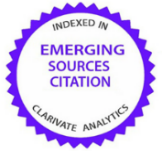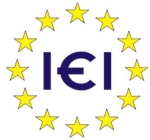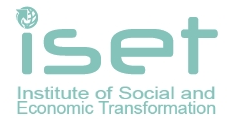Assessment of innovation and investment potentials as a strategic basis for identification of Smart Specialization of regions of Ukraine
Abstract
Introduction. The key role in maintaining the competitiveness of economic systems belongs to the innovative specialization of economic activity, which diversifies economic activity. The existing methodological approaches to determining the strategic priorities of Smart Specialization of a particular region do not fully take into account the assessment of innovation and investment potential, taking into account the environmental component of sustainable development.
Aim and tasks. The purpose of the proposed study is the formation of scientific approaches to assessing innovation and investment potential in the context of the formation of strategic regional environmental policy in the context of the methodology of Smart Specialization.
Results. The article substantiates the methodological provisions for combining the methodology of Quintuple helix, Smart-specialization and Sustainable Development Goals. The institutional essence of investment and innovation policy of nature management at the regional level as a modern model of Quintuple helix is determined. An assessment of the innovation potential of the regions as a component of investment and innovation policy of nature management. The dynamics of implementation of environmental innovations by enterprises of Ukraine, the concentration of higher education institutions by regions, in particular, subordinate government agencies are analyzed. The number of students, specialists in higher education institutions majoring in natural sciences, employment in the field of nature management has been determined. The strengthening of the ecological component in the scientific and educational spheres is established for the further implement the borrowed knowledge in the formation of investment and innovation policy of nature management of individual regions. The natural resource potential of the country in terms of regions according to the statistical database is studied.
Conclusions. The presented research proposes the author's vision, which allows not only to outline the dominants of Smart Specialization of кegions in order to determine the strategic priorities of investment and innovation policy of the national sphere of nature, but also to explore the uniqueness of regions based on scientific and technical potential. Implementation of the Smart Specialization Strategy, which will combine the methodology of Quintuple helix and Smart Specialization will provide an opportunity to determine the approach to the formation and implementation of state regional policy. A methodological approach to determining the dominants of investment and innovation regional environmental policy has been developed, taking into account the methodology of "Smart Specialization" and in the context of existing European experience.
Keywords:
smart specialization, sustainable development, innovation, investment potentials.References
2. Decentralization (2019). Regional Development Strategies 2021-2027: what should the regions do this year to reach a qualitatively new level of strategic planning. Retrieved from: https://decentralization.gov.ua/news/10591 [in Ukranian].
3. Odessaizbirkom (2018). Odessa region was chosen to participate in the EU project "SMART-specialization". Retrieved from: https://izbirkom.org.ua/news/ekonomika-9/2018/odesskuiu-oblast-vybrani-dlia-uchastiia-v-proekte-evrosoiuza-smart-spetsializatsiia
4. Foray, D., Goddard, J., Beldarrain, X.G., Landabaso, M., McCann, P., Morgan, K., Nauwelaers, C. & Ortega-Argilés, R. (2012). Guide to Research and Innovation Strategies for Smart Specializations (RIS 3), European Commission.
5. Richardson, K. (2014). Smart Specialization: What does it mean in practice for universities? Retrieved from: https://youtu.be/a_sGcbmKe1g.
6. Ortega A.R., McCann, P., Perianez-Forte, I., Cervantes, M., Larosse, J. & Sanchez, L. (2013). Innovation-driven growth in regions: the role of smart specialization. OECD Science, Technology and Industry Policy Papers, 12. Paris: OECD / ODCE.
7. Sugimoto, C.R., Robinson-Garcia, N. & Costas, R. (2016). Towards a Global Scientific Brain: Indicators of Researcher Mobility using co-affiliation Data. Ghent, Belgium.
8. Bakhshi, H. & Mateos-Garcia, J. (2016). New Data for Innovation Policy. Ghent, Belgium.
9. Delaney, K. & Osborne, L. (2013). Public sector horizon scanning-stocktake of the Australasian joint agencies scanning network. Journal of Futures Studies, 17 (4), 55-70.
10. Patytska, H.O. (2019). Smart Specialization Strategy in the Context of Ensuring the Competitiveness of the Region: A Theoretical Aspect. Efficient economy, 11. https://doi.org/10.32702 / 2307-2105-2019.11.53.
11. The S3 Platform Peer Review Methodology (2014). JRS Technical reports. S3 Working papers, No. 02/2014, Joint Research Center, Seville, Spain.
12. Innovation and specialization regional in Latin America (2017). JRS Technical reports, European Commission.
13. Cornell University, INSEAD, and WIPO. (2018). The Global Innovation Index 2010-2018. Retrieved from: http://www.globalinnovationindex.org.
14. On priority areas of innovation in Ukraine: Law of Ukraine of September 8, 2011 No. 3715-VI. Official Gazette of Ukraine dated 14.10.2011, No. 77, p. 14, Article 2841, act 58478/2011.
15. State Statistics Service of Ukraine (2019). Scientific and innovative activities in Ukraine in 2015. Retrieved from: http://www.ukrstat.gov.ua.
16. State Statistics Service of Ukraine (2019). Higher educational institutions of I-IV levels of accreditation. Retrieved from: http://www.ukrstat.gov.ua.
17. State Statistics Service of Ukraine (2019). Number of students at the beginning of the school year. Retrieved from: http://www.ukrstat.gov.ua.
18. State Statistics Service of Ukraine (2020). Economic activity of the population of Ukraine 2016-2018: statistical collection. Retrieved from: http://www.ukrstat.gov.ua.
19. Ministry of Regional Development, Construction and Housing of Ukraine (2019). On amendments to the Procedure for evaluation of regional development projects that can be implemented at the expense of the state budget received from the European Union: Order of 17.07.2019 No. 165.. Official Gazette of Ukraine dated August 30, 2019, No. 66, p. 343, Article 2327, act code 95593/2019.
20. State Statistics Service of Ukraine (2019). Gross regional product in 2017. Statistical collection. Kyiv.
21. Foray, D., Goddard, J., Beldarrain, XG, Landabaso, M., McCann, P., Morgan, K., Nauwelaers, C. & Ortega-Argilés, R. (2012). Guide to Research and Innovation Strategies for Smart Specializations (RIS 3), European Commission.
22. State Statistics Service of Ukraine (2019). Capital investments in environmental protection. Retrieved from: http://www.ukrstat.gov.ua.
23. State Statistics Service of Ukraine (2019). Environment of Ukraine for 2018. Retrieved from: http://www.ukrstat.gov.ua.
24. Kostetska, K., Khumarova, N., Umanska, Y., Shmygol, N., & Koval, V. (2020). Institutional qualities of inclusive environmental management in sustainable economic development. Management Systems in Production Engineering, 28 (2), 15-22. https://doi.org/10.2478/mspe-2020-0003.
25. Ministry of Energy and Environmental Protection (2020). Regional report on the state of the environment in 2015-2018. Retrieved from: https://menr.gov.ua.
If the article is accepted for publication in the journal «Economics. Ecology. Socium» the author must sign an agreementon transfer of copyright. The agreement is sent to the postal (original) or e-mail address (scanned copy) of the journal editions.






















